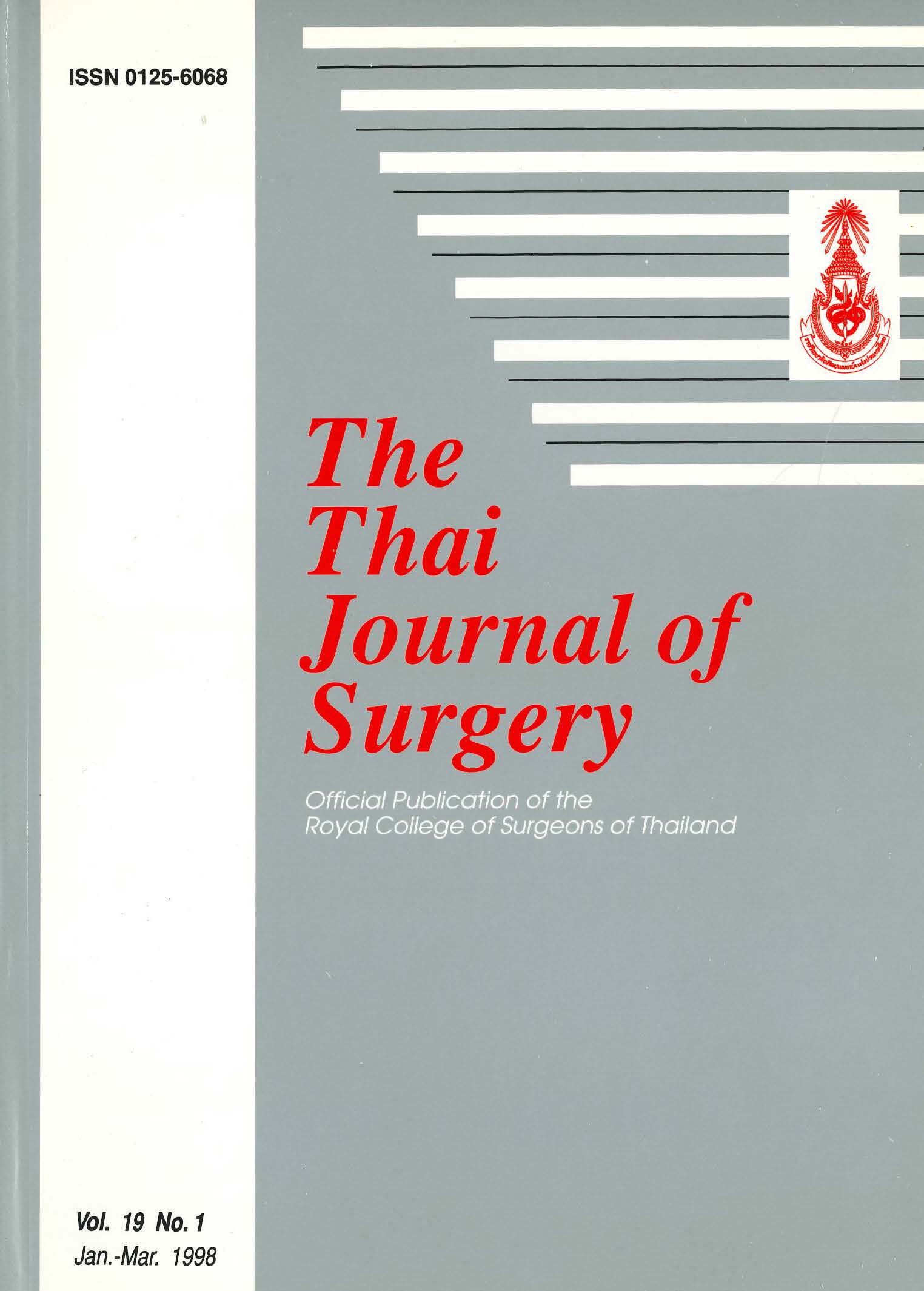Trauma Audit for Hospital Care Improvement at Khon Kaen Hospital
Abstract
Trauma management system is complicated and critical. Many stations must be involved in the system. Any pitfall that happens in any station of the management system may result in mortality or serious morbidity. In order to enhance the quality of care of trauma patients, Khon Kaen Hospital has set up "Trauma audit for hospital care improvement project" to establish a system of monitoring the quality of trauma care and build up the trauma audit filter as a hospital guideline for management of trauma patients.
The system for grading the severity of injury had been set up by TRISS methodology in our trauma registration system. The outcome and pitfalls of trauma management had been analyzed 6 months period before and after the implementation of hospital trauma audit filter.
After the implementation of the trauma audit filter, the preventable death rate had been decreased from 3.2 to 2.7 per cent and the pitfall in the management and factor contribute to mortality had been decreased from 407 points to 301 points and 265 points to 217 points respectively.
This project had created a standard model to evaluate the quality of trauma care. It had also given a set of knowledge about the pitfall in the management of traumatic patients with was the valuable information to set up the trauma audit filter for trauma care. The usage of this filter resulted in better quality of care.
References
2. Fitts WT, Lehr HB, Bitner RL. An analysis of 950 fatal injuries. Surgery 1964;56;663-8.
3. Gertner HR, Baker SP, Rutherford RB. Evaluation of the management of vehicular fatalities secondary to abdominal injury. J Trauma 1972; 12:425-31.
4. Neuman TS, Bockman MA, Moody P. An autopsy study of traumatic deaths: San Diego County. Am J Surg 1982; 144:722-7.
5. Cales RH, Trunkey DD. Preventable trauma deaths. A review of trauma care system development. JAMA 1985; 253:1059-63.
6. Baker SP, O'Neil B, Haddon WG, The injury severity score: a method for describing patients with multiple injuries and evaluating emergency care. J Trauma 1974; 14:187-96.
7. Baker SP, O'Neil B. The injury severity score: an update. J Trauma 1976: 16:882-5
8.Champion HR. Trauma. 2nd ed. Norwalk, Connecticut: Appleton of Lange. 1991:47-65.
9. Champion HR, Sacco WJ, Carnazzo AJ. Trauma score. Crit Care Med 1981; 9:672-6.
10. Champion HR, Sacco WJ, Copes WS. A revision of the trauma score. J Trauma 1989: 29:629-63.
11. Champion HR, Sacco WJ, Copes WS. The management trauma outcome study: establishing national norms for trauma care. J Trauma 1990; 30:1356-65.
12. Copes WS, Champion HR. Sacco WJ. The injury severity score revisited. J Trauma 1988; 48:69-77.
13. Boyd Cr. Tolson NA, Copes WS. Evaluating trauma care: The TRISS method. J Trauma 1987: 27:370-8.
14. Champion HR, Sacco WJ, Hunt TK. Trauma severity scoring to predict mortality. World J Surg 1983; 7:4-11.
Downloads
Published
How to Cite
Issue
Section
License
Articles must be contributed solely to The Thai Journal of Surgery and when published become the property of the Royal College of Surgeons of Thailand. The Royal College of Surgeons of Thailand reserves copyright on all published materials and such materials may not be reproduced in any form without the written permission.



